Polyethylene (PE)
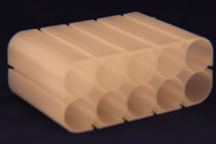 Rebling has been injection molding high, medium, and low-density polyethylene and polyethylene copolymers for over 25 years. Typical applications for this versatile material include housewares, toys, food containers and closures, and automotive parts.
Rebling has been injection molding high, medium, and low-density polyethylene and polyethylene copolymers for over 25 years. Typical applications for this versatile material include housewares, toys, food containers and closures, and automotive parts.
Properties of Polyethylene Plastic
Properties of this material vary greatly depending upon the grade selected. Products molded from polyethylene can be soft and flexible to hard and rigid. As a family, they are light in weight and possess toughness, chemical resistance, impermeability as well as excellent electrical insulating properties.
Polyethylene can be classified into three ranges of density. Low density polyethylene (aka LDPE) has a density of .910 to .925 g/cc; whereas the medium density grade has a density of .926 to .940 g/cc. The high density grade (HDPE) has a density of .941 to .960 g/cc. As a general rule, the higher the density, the harder, the more rigid, and the more heat resistant the plastic. Low and medium density polyethylenes, for example, have melting points of about 230 -240°F whereas the high density material has a melting point of about 25°F higher. Higher density resins show improved tensile and flexural strength, chemical resistance, surface hardness, and abrasion resistance but poorer elongation and brittleness at low temperatures. Various polyethylene copolymers are also available that show much different characteristics than the parent monomer.
Polyethylene is available in clarity ranging from transparent to opaque and in an unlimited number of color possibilities. This plastic injection molding material possesses outstanding chemical resistance to alkalis and organic solvents but is attacked by oxidation when exposed to strong acids. It is also subject to environmental stress cracking caused by exposure to a chemical while under an imposed stress that otherwise could be withstood almost indefinitely. The chemical resistance of polyethylene improves with increasing density; thus a high density polyethylene possesses greater chemical resistance when compared to low and medium density grades.
The low cost of this versatile material makes it an ideal candidate for disposable and recyclable product applications. The material’s low density also reduces product cost as more volume of plastic can be processed per pound of material.
Polyethylene plastic injection molding design
Rebling design engineers have extensive experience in optimizing plastic part designs for functionality, cosmetics, cost, and the plastic injection molding process. As with other thermoplastics, maintaining a uniform wall thickness throughout the part is essential in producing an aesthetically pleasing molding. Ribs, gussets, and bosses incorporated in the design can result in sink marks if not properly designed. Undercuts, which are often used for snap fits, are common in polyethylene moldings and can be readily ejected from the mold if sized correctly. Consultation with Rebling engineering staff will insure that the molded part will meet the intent of the design engineer.
Secondary Operations for Polyethylene plastic parts
Polyethylene can be decorated using the hot stamping and pad printing processes. To improve adhesion, the surface to be decorated may be flame treated in some applications.
Machinability of the high density grades is superior to the low and medium density versions, but drilling, turning and cutting can be performed on all grades.
Ultrasonic insertion is not typically specified in polyethylene moldings, primarily because this material is used in very high volume, low cost applications.


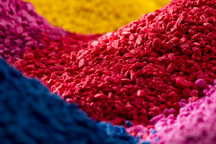 Thermoplastic
Thermoplastic ABS
ABS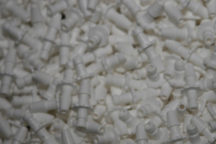 Acetal
Acetal Acrylic
Acrylic EMI
EMI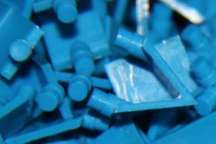 Noryl (PPO)
Noryl (PPO)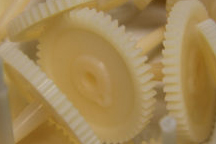 Nylon (Polyamide)
Nylon (Polyamide)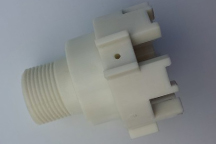 Polybutylene Terephtalate (PBT)
Polybutylene Terephtalate (PBT)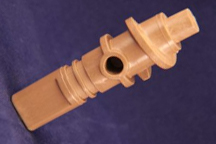 Polyether Ether Ketone (PEEK)
Polyether Ether Ketone (PEEK) Polycarbonate (PC)
Polycarbonate (PC)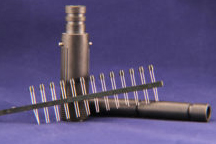 Polyphenylene
Polyphenylene Polypropylene (PP)
Polypropylene (PP)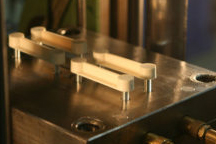 Polystyrene (PS)
Polystyrene (PS)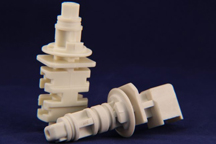 Polysulfone (PSU)
Polysulfone (PSU)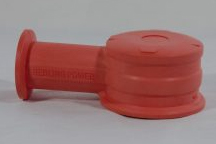 Thermoplastic Elastomers
Thermoplastic Elastomers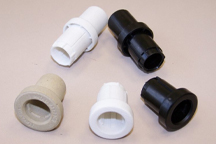 UHMW
UHMW Polyetherimide (Ultem)
Polyetherimide (Ultem)